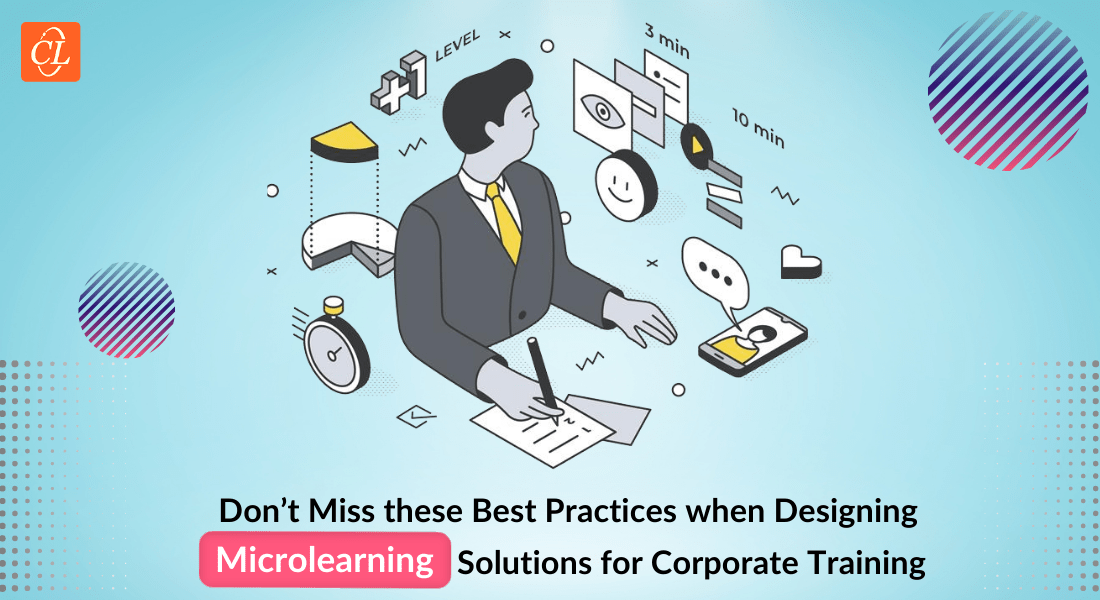How We Designed a Microlearning Course for Safety/Evacuation Training – A Case Study

The modern workforce has a dwindling attention span and to facilitate productive training for them, organizations are advised to create short eLearning courses so that the employees don’t drop out midway. Providing small chunks of information about various topics can help the learners grasp everything effectively as it promotes flexible and spaced learning. There are so many industries and departments that benefit from microlearning modules because they relay direct information efficiently and are easily accessible on multiple devices.
Do you wish to know how we developed effective microlearning courses about safety training for one of our clients? Check out the case study below!
The Case Study on Designing Microlearning Courses for Safety/Evacuation Training
The Client
A Multinational Plant Equipment Manufacturer.
Their Goals
To provide healthy and clean food along with seamless mobility through their three specific divisions – Grain Solutions, Consumer Food Solutions, and Advanced Materials.
Their Company’s Size
They had a huge workforce of over 13000 employees spread over 140 countries. They have 100+ service stations and 30 manufacturing units, and their revenue in 2021 was CHF 2.7 billion. They have significant contributions to many industries because of their innovative technologies.
How They Got to Know About Us and Our Services
Our inbound marketing efforts got us the results here as they got to know about us for the first time with help of our blogs, newsletters, and webinars.
Client’s Requirement
Microlearning courses on safety and evacuation measures (German Language).
They wanted to develop short and effective eLearning courses regarding the evacuation/emergency procedures to be followed at one of their manufacturing units. It was basically a safety awareness course for all the employees so that they are well educated about the measures they need to follow in case anything happens. The course was asked to be around 10 minutes of playtime, developed in the German language with English subtitles, with audio narration by one professional narrator. Their requirement was to design courses that are highly interactive and wanted them to be developed with Adobe Captivate, compliant with SCORM 2004.
CommLab India’s Solution
We assembled a team that included an instructional designer, a course developer, and a project manager. As they were microlearning courses, adding ‘nice-to-know’ frills wasn’t an approach, so the first thing we included in the courses was an icebreaker question that was followed by the evacuation basics.
We used real-life images to create an impact in the mind of employees about the consequences of various accidents if correct security measures are not followed. As for the map, we used the original one instead of a sample one so that learners can familiarize themselves with all the places, and various routes which enhanced the practicality of these safety training courses.

We used various interactivities such as branching scenarios, drag-and-drop activities, polls, MCQs, etc. in our course to maximize the engagement and knowledge retention of all the learners. The most challenging part of the development process was to design a course with all its inputs entirely in German because we didn’t have a master course in English.
To solve this issue, we translated all the inputs from German into English. All the queries we had with the SME were written down in English, then translated into German. The same process of German getting translated into English and vice versa was followed for all the processes like feedback, storyboard creation, and course development.

→ This is how the project was a success and the client was very happy with the output they received.
Wrapping Up!
The above case study highlights how we utilized the power of authoring tools and eLearning translations to design engaging and interactive microlearning courses for safety/evacuation measures to be followed by more than 2500 employees. The courses were high on interactivity to maximize employee engagement, knowledge retention, and course completion rates.
Various instructional design strategies were followed to make sure the courses are impactful for all types of employees and actually help them understand each and every security measure in detail with their respective consequences in case of failure. To know more about how you can use instructional design strategies to design various types of eLearning courses, you can access our free webinar recording and get started right away!





